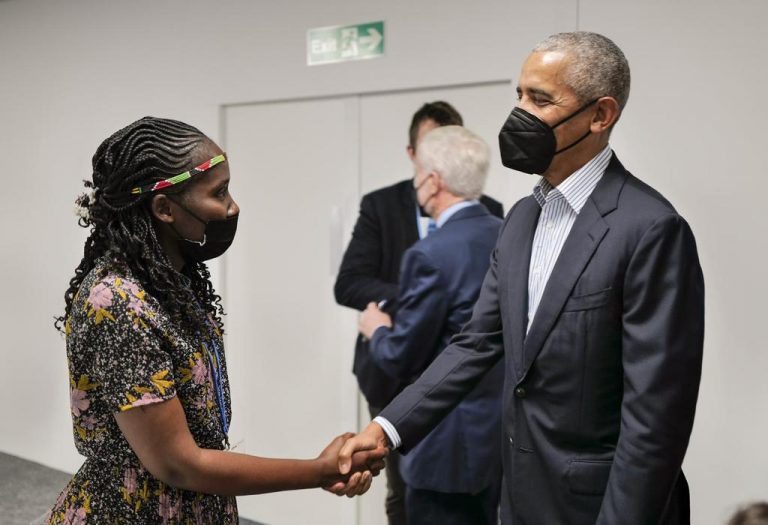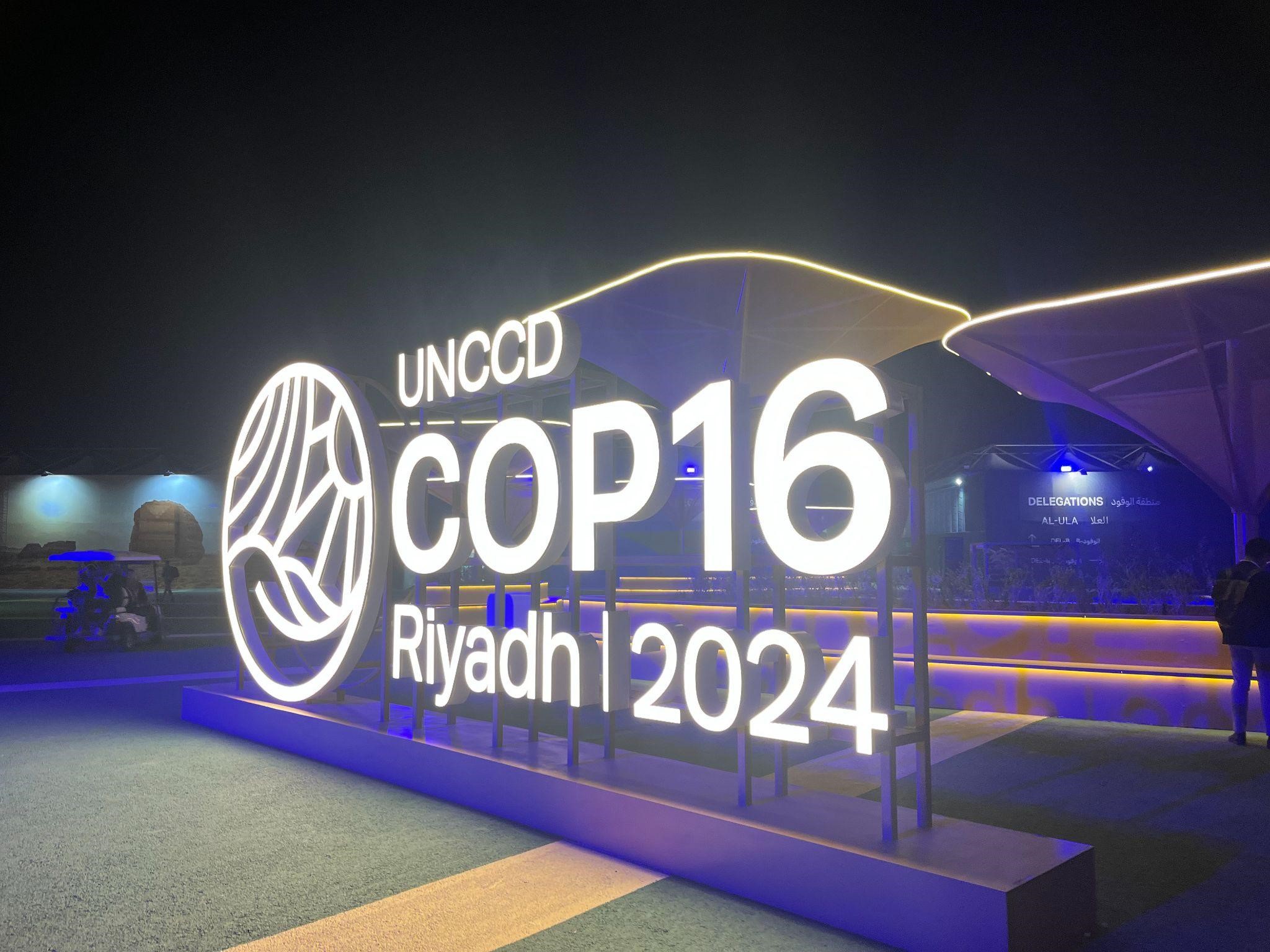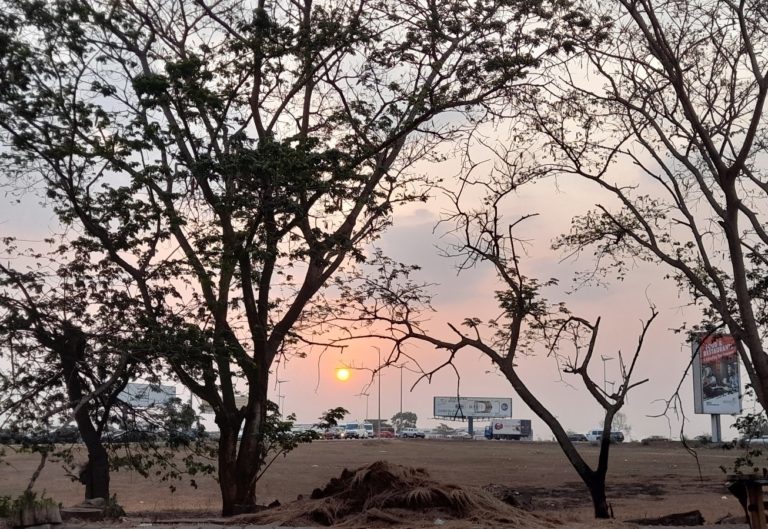The Role of Land in Sustainable Development: Observing Science Policy at the UN Land Conference
Sara Velander is a junior researcher with the LANUSYNCON project at ZEF. In this blog post she shares her experiences and insights from her research trip to the 15th Conference of the Parties (COP15) of the United Nations Convention to Combat Desertification (UNCCD) which was held in Abidjan, Côte d’Ivoire, May 9-20, 2022.
Land Degradation and the UNCCD
Land, a vital resource for humans and animals alike, is consistently decimated through land conversion. Up to 40% of all ice-free land on the Globe has already degraded, adding to negative impacts on 3.2 billion people who depend on land for their livelihoods. Land has multiple uses, e.g. for food, timber, energy, freshwater, biodiversity, climate regulation and pollination. The mounting pressure on land will inevitably accelerate as populations grow, exacerbating conflicts, pandemics, biodiversity loss, and climate change. The restoration of degraded land, therefore, has a crucial role in sustainable development. In fact, land-use is at the core of solving the world’s cumulative crises through the synergies of social, economic and environmental aspects involved.
The United Nations Convention to Combat Desertification (UNCCD), formed in 1994, is the global political body tasked with addressing desertification, land degradation, and the effects of drought in order to protect and restore land for a “safe, just, and more sustainable future”. With 197 parties to this convention, it serves as the ‘global voice for land’, uniting diverse actors around a shared vision for sustainable land management. The UNCCD complements the other so-called Rio Conventions, namely, the United Nations Framework Convention on Climate Change (UNFCCC) and the Convention on Biological Diversity (CBD).
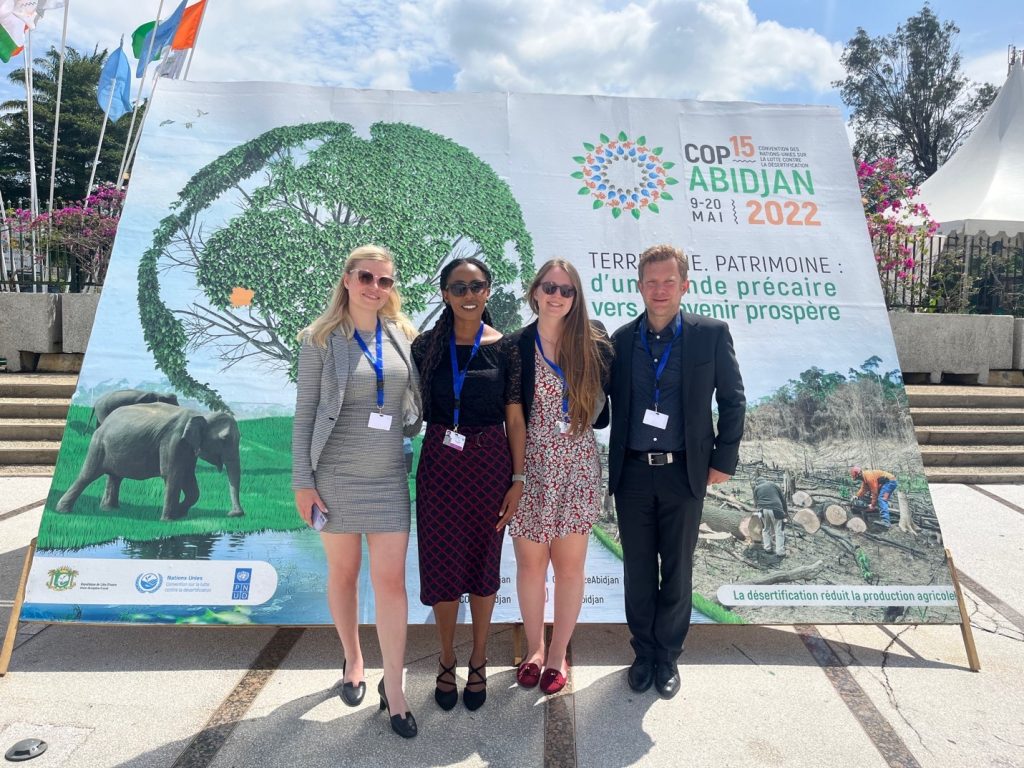
The Science-Policy Interface on Land at the COP15 in Abidjan
All Rio-Conventions have regular meetings of its Parties, the so-called Conferences of the Parties (COP). The UNCCD has biennial meetings, and this year its 15th Conference of the Parties (COP15) was held in Abidjan, Côte d’Ivoire, May 9-20, 2022. At such meetings complex environmental problems are negotiated and multiple interactions occur. So it is crucial to have expertise on board, ensuring that evidence-based, coherent policies that can mitigate conflicts and enhance synergies are formulated. Thus, similar to the other global environmental conventions, the UNCCD is regularly informed with evidence on land-use issues provided by a scientific advisory body, known as the Science-Policy Interface (SPI). The UNCCD established the SPI in 2013 with a strict mandate of providing the Convention’s Committee on Science and Technology with timely and interdisciplinary knowledge required to implement UNCCD decisions. With its unique demand-led, collaborative design and small size, UNCCD’s SPI is an interesting case of how the science-policy divide in the context of sustainable development can be bridged at the global level. Often overshadowed by the Intergovernmental Panel on Climate Change (IPCC) and its biodiversity-related counterpart, the Intergovernmental Science-Policy Platform on Biodiversity and Ecosystem Services (IPBES), this particular SPI is under-researched, though its influence on global land-policies are notable.
Recognizing the significant role this scientific body plays in informing land-related policies and raising awareness on the largest multifaceted threats on land, including deforestation, drought, and industrial agriculture, all causing widespread desertification, I wanted to investigate the SPI more closely for my doctoral research. Thus, I decided to attend the COP15. At this huge conference (gathering around 7,000 people from 196 countries), I was able to collect data on the effectiveness of UNCCD’s SPI and how it copes with complex problems related to the Sustainable Development Goals (SDGs) on land use.
COP15: A Conference on ‘Land, Life, Legacy’
The conference theme was ‘Land. Life. Legacy: From scarcity to prosperity” aiming to highlight how land should be restored to benefit current and future generations. This meeting is especially important as populations in Eastern Africa continue to suffer from severe food and water shortages due to the longest drought experienced in the last 40 years. Therefore, throughout COP15 several relevant topics were discussed at the negotiations and side events, including drought resilience, the achievement of land degradation neutrality[1], investments in land restoration, and meeting the needs of the most vulnerable groups including women, migrants, and youth. In addition, there were talks on land tenure, synergies of the Rio Conventions, and the increase in sand and dust storms worldwide.
The two-week international land conference in Abidjan provided the first opportunity to meet in-person and on-site since the COP14, which was held in New Delhi, India, in 2019.
“I was lucky enough to be able to attend the conference in Abidjan in the company of other ZEF-colleagues. The ZEF-based CABES and AFAS project teams were also traveling to Abidjan for organizing and attending several parallel events, in addition to the COP15. We were grateful to receive provisional admittance from the UNCCD secretariat to the conference by submitting an application for accreditation as an observer together with the University of Bonn a few weeks before. The University of Bonn is officially accredited as an observer organization to several Rio-conventions, among them the UNCCD”.
It therewith provides its academic community ample opportunities to engage in the global discourse on issues such as sustainable land management. Moreover, it enables us to establish partnerships with other like-minded organizations, in our case those working on desertification issues. In fact, it was due to this University-related accreditation that the ZEF-projects LANUSYNCON (which I am part of), AFAS, and CABES were able to organize and host a side event at the Africa Pavilion. At this side event I presented the LANUSYNCON project and my preliminary research findings on science-policy interfaces.

On-site Insights and Impressions
The COP15 took place in the lavish Sofitel hotel which overlooks the lagoon surrounding Abidjan, providing gorgeous, coastal views of the tropical Western African capital. As the hotel had only one large plenary hall, there were additional tents set up around the hotel to provide extra space for negotiation sessions and side events. On the second day of the conference, one day after we arrived, I joined the swarm of Heads of State, ministers, government officials, private sector, civil society, women, youth, and the media entering the conference zone to retrieve my badge. COVID-19 regulations were still in effect, with stringent hygiene measures imposed during the first few days. On the first day there was widespread confusion when all conference participants (regardless of their vaccination status) were required to be tested on the Covid-19 virus before they were allowed to enter the venue. During the subsequent days, only random temperature checks and limited enforcement of mask wearing were carried out.
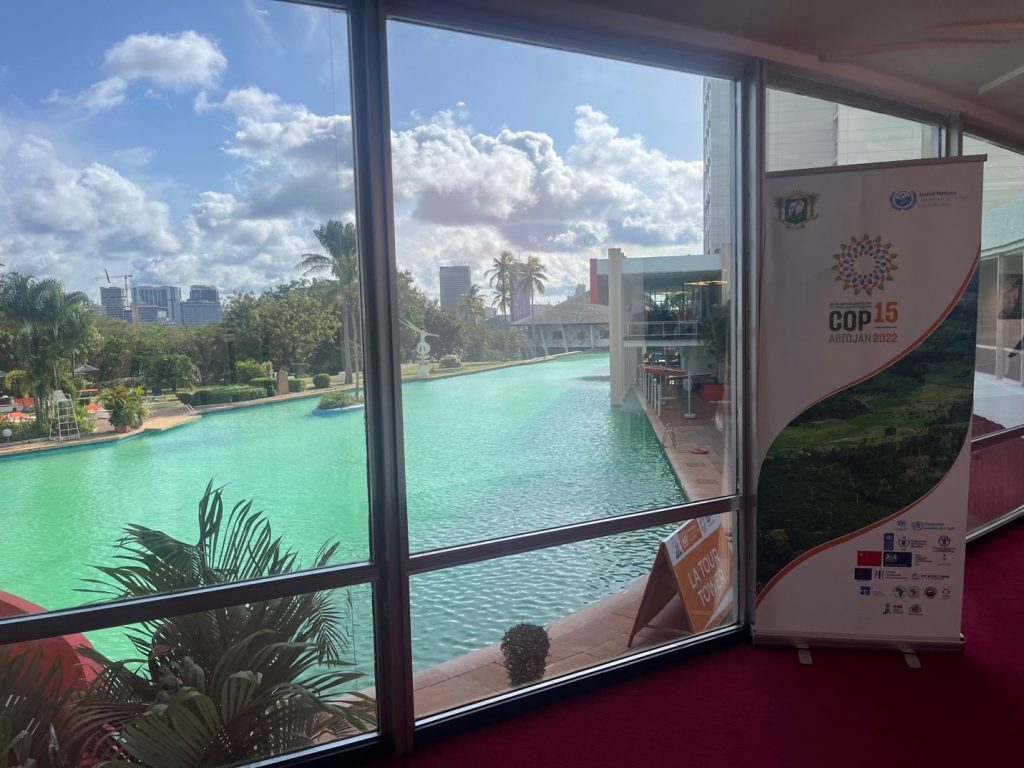
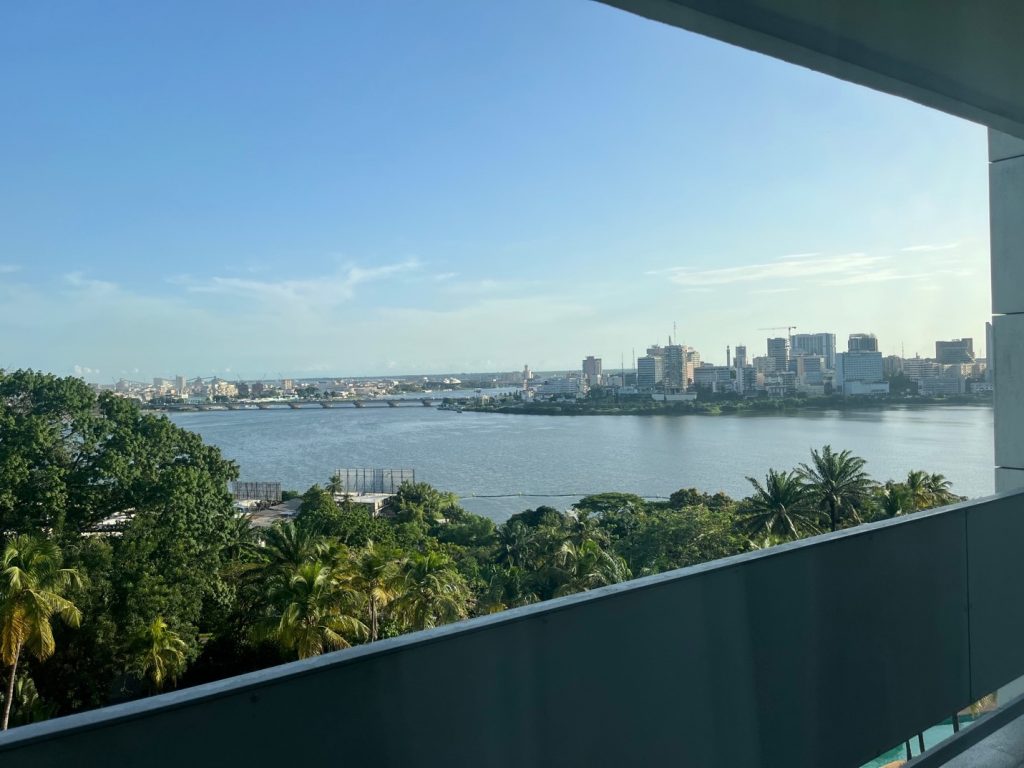
Insights from Interviews and Negotiations
In comparison to the chaotic and crowded UNFCCC COP 26 held in Glasgow, Scotland, end of 2021, which I attended previously for my research, I felt more comfortable approaching conference participants at this much smaller and calmer UN conference.
“I was able to speak to more people than expected thanks to the kindness of two preliminary contacts in the SPI. They introduced me to the entire delegation of SPI members attending COP15 and one of them even invited me to speak about my research and the importance of youth in science-policy during a session at the Science Day, (a one-day scientific conference hosted by the SPI)”.
By the time we left Abidjan at the end of the second week, I had completed on-site interviews with 11 respondents. After the conference I conducted additional online interviews mostly with SPI members along with a few policymakers and UNCCD secretariat staff.
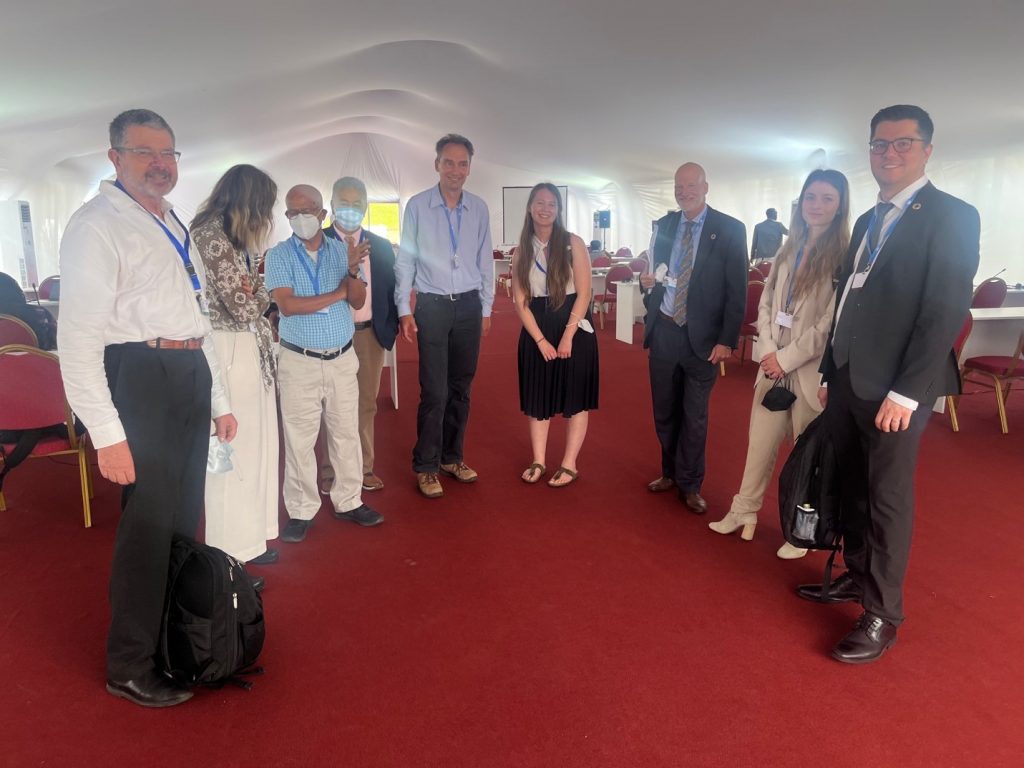
The interviews aimed to gather insights from SPI members and stakeholders on four main themes: 1) their role in the UNCCD-SPI and its outcomes on the COP; 2) their perceptions of the extent of synergies and trade-offs between SDGs related to land use and the translation of this complexity in the outputs of SPIs; 3) the institutional strategies employed by SPIs to cope with complexity related to land use; and 4) the extent of collaboration between two or more SPIs.
One of the common themes that emerged was the major uptake of science in policy at the UNCCD, where delegates seem to be actively listening to scientists. However, there is uncertainty about the policy outcomes at other levels, especially since the UNCCD is the smallest and least-funded of the Rio Conventions. This entails that many parties who do not consider land degradation as a severe problem for their country ascribe less importance to the UNCCD.
Nonetheless, concerning complexity, the majority of experts claim that the SPI technical reports are always set in the context of multiple SDGs by discussing multifaceted aspects of land degradation, like access to land, equality, and land use planning. There was almost unanimous agreement that the SPI is facing severe constraints on its capacity and mandate because of pressure to fulfill more functions and go beyond the scope of specific sustainable development topics. Needless to say, the SPI is already pushing in this direction because one of its main objectives is to coordinate with other SPIs and scientific organizations. This effort includes reviewing reports by the IPCC, IPBES, the Food and Agriculture Organization (FAO), and the United Nations Environment Program (UNEP). Still, there could be more collaboration and alignment between the three SPIs associated with the Rio Conventions to craft a common message addressing land conflicts.
Other than networking and conducting interviews, I attended and observed seven negotiation sessions at COP15, along with three side events: One on science-policy, another about the green wall initiative, and one on landscape connectivity. The most relevant and interesting sessions for my research took place in the first week when the Committee on Science and Technology met. In these sessions the SPI plays a crucial role, giving thorough presentations on key messages of the technical reports they completed in the past two to three years at the request of policymakers. This year they reported on the approaches of integrated land-use planning and integrated landscape-management, coordination activities with other intergovernmental panels, and sharing knowledge through the UNCCD Knowledge Hub. Following the presentations, several countries gave interventions where they would pose questions to the SPI members. While most of them commended the activities done by the SPI, they also raised concerns. These included the impacts of land degradation that are often confused with the impacts of climate change and the lack of consideration of and outreach to local contexts. Another concern was the late submissions of technical reports to policymakers, who therewith have only limited options of reviewing them.
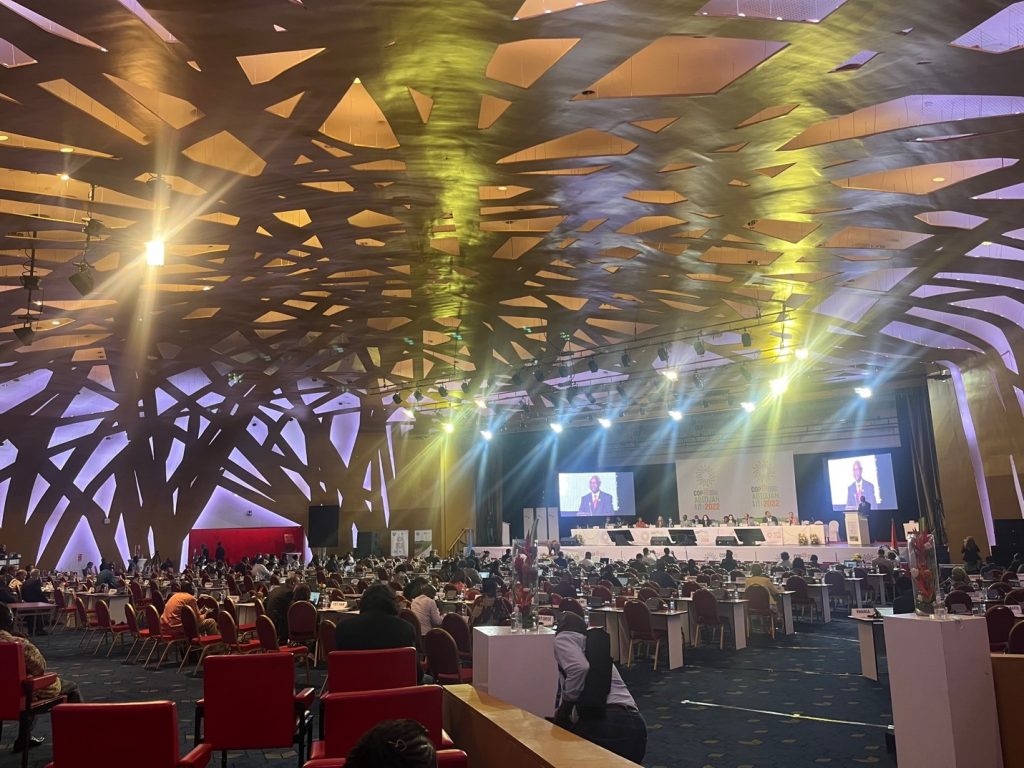
Linguistic and Sectoral Silos in Global Environmental Governance
A significant issue that rings true for all UN conferences is the effects of language barriers on the translation of concepts, leading to miscommunication, misunderstandings, and under-representation of perspectives. Every negotiation session at COP15 was interpreted. This is both a very costly and time-consuming procedure, yet, necessary for the many policymakers who do not speak English, especially as the conference was being hosted in a French-speaking country. This was further highlighted in the side events I attended, including one of the sessions in the Science Day where I presented.
” I was not aware that I was being interpreted until I met the interpreter later on at another parallel event hosted by CABES and AFAS. Here, he told me I was speaking too fast for him to interpret into French. This issue demonstrates that we continue to live in linguistic silos and that there is a need for additional resources to be allocated to interpretation services for an inclusive and just conference to be held”.

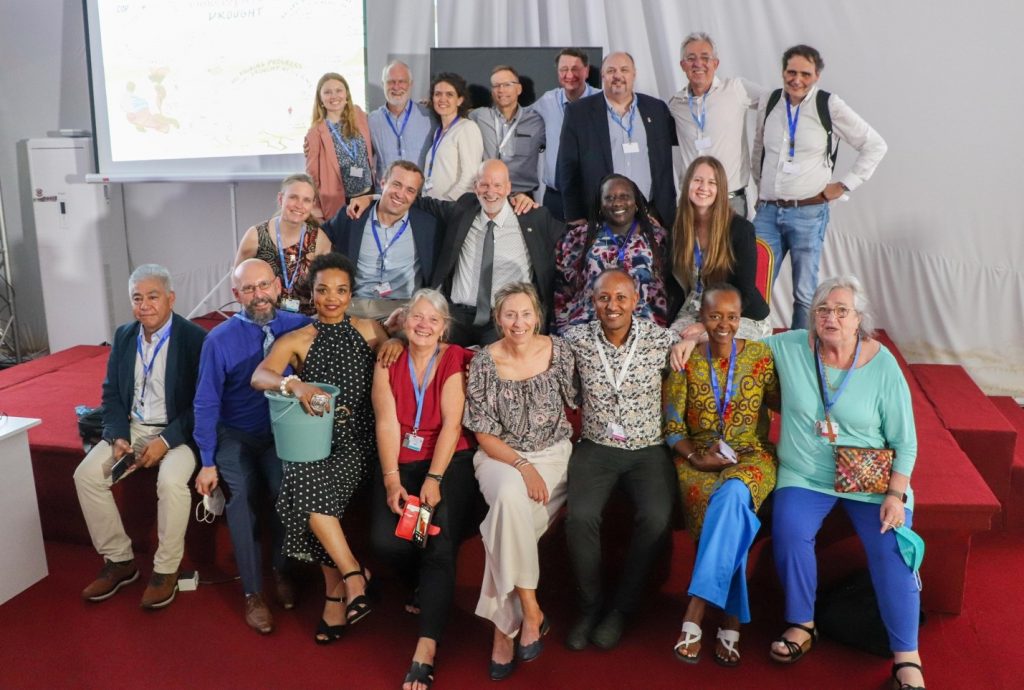
” All in all, my main takeaway from the insights gathered at this unique UN conference on land is that we still need to overcome the many linguistic, disciplinary, and sectoral silos that prevail in the global environmental governance regime. Only if the UNCCD, along with the other Rio Conventions, and associated intergovernmental scientific panels address these silos, on top of the dire resource constraints, they will be able to align their decisions on land with other sustainable development goals. The other biggest take-away from attending this conference was the uniting role of land for all the Rio Conventions, dubbed by the lead scientist of the UNCCD, Dr. Barron Joseph Orr, as ‘the accelerator for sustainable development’. Land is at the heart of the problem and the solution of the complex problems we face. These conferences provide a crucial platform for diverse knowledge-sharing and partnership-building on land degradation enabling us to plan a collective response to global environmental problems. Therefore, through my research, beginning with this blog, I hope to elevate the importance of the UNCCD and the knowledge co-produced by its SPI, marking land as a priority for the governments that fail to recognize the inter-connectedness of desertification with climate change and biodiversity loss.“
Sara Velander about her visit to COP15 in Abidjan.
For more detailed information on the key outcomes of UNCCD COP15, I recommend reading the summary provided by the Earth Negotiations Bulletin.
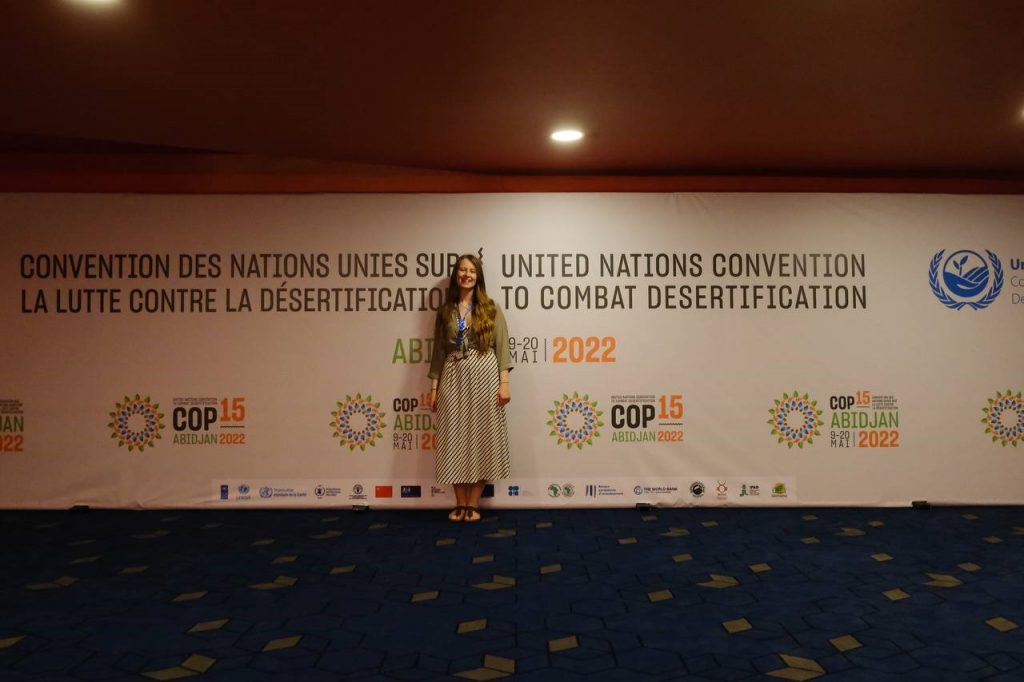
[1] LDN as “a state whereby the amount and quality of land resources necessary to support ecosystem functions and services to enhance food security remain stable, or increase, within specified temporal and spatial scales and ecosystems.”



